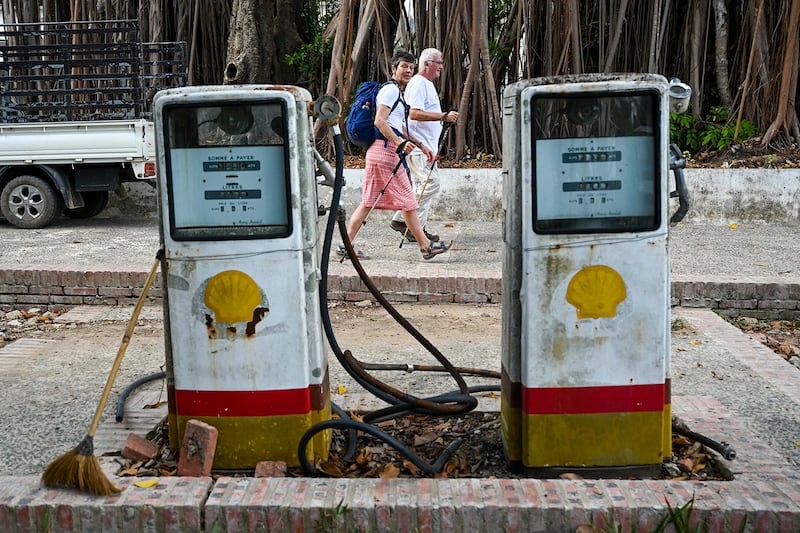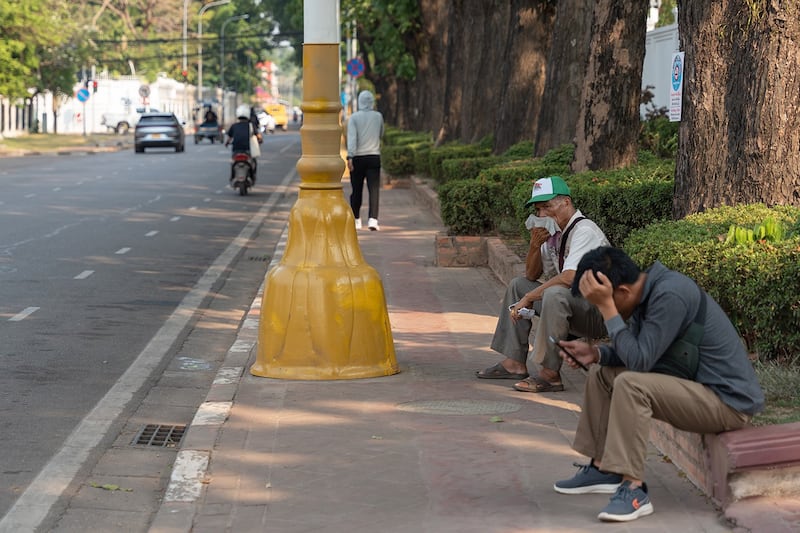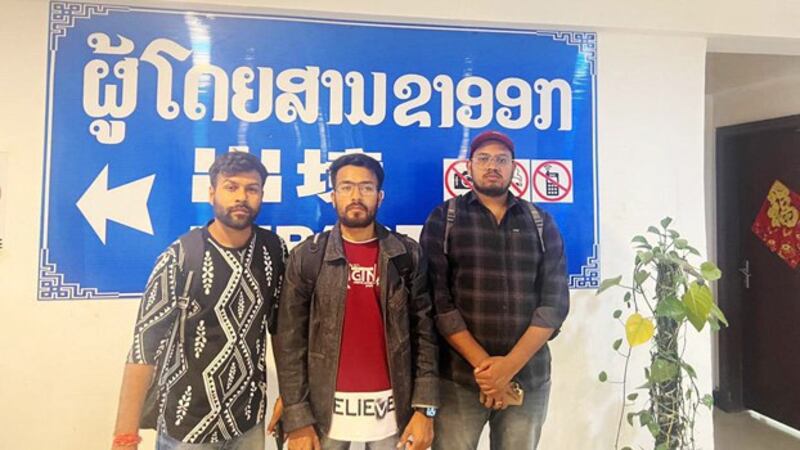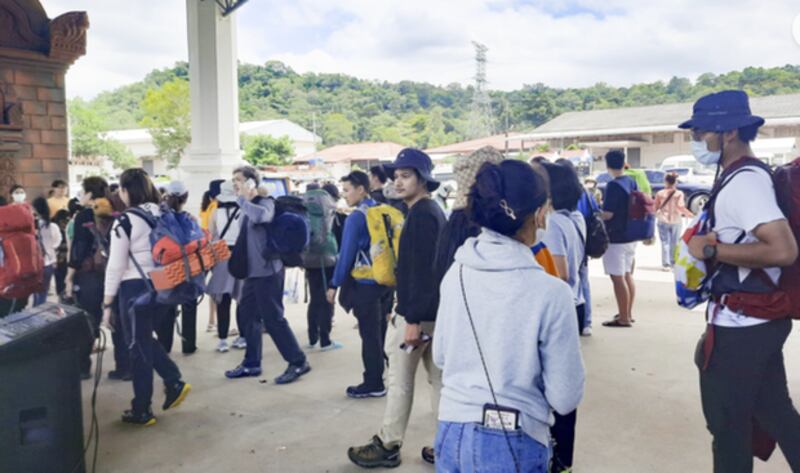With a plummeting birth rate and aging population, Thailand has long depended on migrant workers from neighboring countries. Increasingly joining migrants from Myanmar and Cambodia in ASEAN’s second largest economy are Lao youth, who are not merely pulled, but pushed, to Thailand due their country’s dire economic situation.
Laos is a small country. Its population is 7.8 million, and with a fertility rate of 2.4%, it has modest growth especially given the relatively high infant mortality rate of 185 per 100,000 births. 38% of the population is urban.
The $18 billion economy has still not recovered from the pandemic.

Prime Minister Sonexay Siphandone has been unable to get the economy growing, despite the return of tourism after the pandemic decimated the sector, and the opening of the high speed railway from China.
Laos remains a very poor country with per capita GDP still under $2,800.
Inflation is 25%, the second highest in ASEAN behind war-torn Myanmar. It’s the third consecutive year that inflation is above 20%, eating away at people’s meager incomes.
The Lao kip lost 30% of its value in 2023 and is still sliding. The World Bank recently warned "Tighter monetary and fiscal policies and renewed efforts to enforce foreign exchange restrictions have had little impact in restoring macroeconomic stability."

Although the World Bank predicts 4% growth in 2024, it has expressed concern that what drove growth over the past two decades is unsustainable.
“Large-scale investments in capital intensive sectors, particularly in mining and hydropower,” failed to create many jobs and caused enormous environmental damage.
Staggering debt
More importantly, those investments saddled the country with debt: “Public investment in the power sector has been mostly financed by external debt, often on commercial terms, gradually jeopardizing macroeconomic stability,” the World Bank noted
Debt – staggeringly high for such a poor country – is 112% of GDP, over half of which is owed to China. Thailand holds roughly 6%, while the World Bank and Asian Development Bank hold 7% and 8%, respectively.
Laos is reportedly negotiating with Beijing to restructure its debt. Beijing can ill afford the optics of further defaults, and will be pushing for debt-for-equity swaps.

The sharp decline in the value of the kip is going to make the servicing of Laos' $14 billion debt harder. The Central Bank needs $10 billion to cover all obligations in 2024, but currently only has $3 billion, according to Radio Free Asia reporting.
The Central Bank recently issued $368 million in bonds to cover immediate needs, but at some point the political risk will be so large that Laos will run out of potential investors, or short of that, have to offer an above-market coupon, making the cost of borrowing unsustainable.
Laos also has considerable food insecurity issues. Malnutrition increased during the pandemic, but is still growing due to inflation. Some 30% of children under five years of age are affected by stunting, harming both physical and cognitive development.
Lao authorities have documented a decline in school attendance since 2022, which they attribute to inflation and a sharp decline in household income.

Education woes are even worse at the tertiary level. The four state-owned universities have all seen declining enrollments, while the National University of Laos saw matriculation fall by one-third, from 9,000 to 6,000, since the pandemic.
That has resulted in an insufficient number of hydroelectric and mining engineers, two growing sectors of the economy that are in desperate need of skilled workers.
Large-scale emigration
Sadly, the only sector of the economy that is showing real growth is the proliferation of cyber scam centers, casinos, and human trafficking, especially in the Chinese-owned special economic zones.
This is further evidence that the state is losing much of its capacity to govern and regulate. Law enforcement and regulators simply don't have the budgets to do their jobs.
Though Laos has recently assisted in the return of over 1,000 Chinese nationals working in scam centers, that is only the tip of the iceberg.
Laos is increasingly a transit hub for the tens of billions of dollars worth of illicit drugs pouring out of Myanmar's Shan state. Despite record seizures, including a recent haul of 5.3 million methamphetamine pills and 225 kilograms of heroin, more drugs are getting through.
Criminal gangs are engaging in shootouts with under-resourced law enforcement. For many underpaid police, the choice of "lead or gold" is an easy one.
Related stories
[ Government overconfidence could cloud a brighter future for LaosOpens in new window ]
[ Lao students quit school amid dismal economyOpens in new window ]
[ Why Laos’ Communists cannot do anti-corruptionOpens in new window ]
As an unaccountable one-party system whose economy is overly controlled by the state, and which has no independent media, Laos is beset by corruption. Soaring inflation, a depreciating kip, and paltry salaries, only serve to incentivize corruption among bureaucrats.
Lao politics are elitist and opaque. The ruling Lao People's Revolutionary Party’s 13-member Politburo and 81-member Central Committee are small, nepotistic, and unaccountable. They have also proven to be not up to the task of running the country’s economy.
This leads to the large-scale emigration to Thailand, as there is simply no future for Lao youth.
Thailand, with its close linguistic and cultural ties, is a natural draw for Laotians. Lao migrants tend to draw less scrutiny than Burmese and Khmer. That has led to a sharp decline in the Lao workforce, in sectors that are profitable, such as coffee.
Analysts have often debated whether the Lao leadership is pro-Vietnamese or pro-Chinese.
For the former, they point to strong historical ties and the fact that Vietnam continues to train much of the Lao leadership. For the latter, they cite Beijing’s bailout of the kip in 1998, China’s economic domination of the country, and its role as lender of last resort.
Both countries pose both threats and challenges to Vientiane. And yet neither threatens the insecure and insular Lao leadership as much as being slowly subsumed into Thailand.

With its capital on the banks of the Mekong, at one of the four bridges that connect the two countries, the Lao population is saturated with Thai media and culture. There are now more Lao speakers in Thailand’s Isaan province than in Laos.
The liquidation of the Royal Family, who died in remote re-education camps following the Communist Pathet Lao’s takeover of the country in 1975, has meant that the Thai royal family serves as a stand in.
Laos runs a large trade deficit with Thailand. In 2022, Thai exports to Laos were $4.04 billion. The largest share was refined petroleum ($1.11 billion). Laos only exported $2.34 billion to Thailand, more than $2 billion of which was electricity.
Perhaps there is no more important Lao export to Thailand than the country’s youth, who see very little reason to stay.
Zachary Abuza is a professor at the National War College in Washington and an adjunct at Georgetown University. The views expressed here are his own and do not reflect the position of the U.S. Department of Defense, the National War College, Georgetown University or Radio Free Asia.
